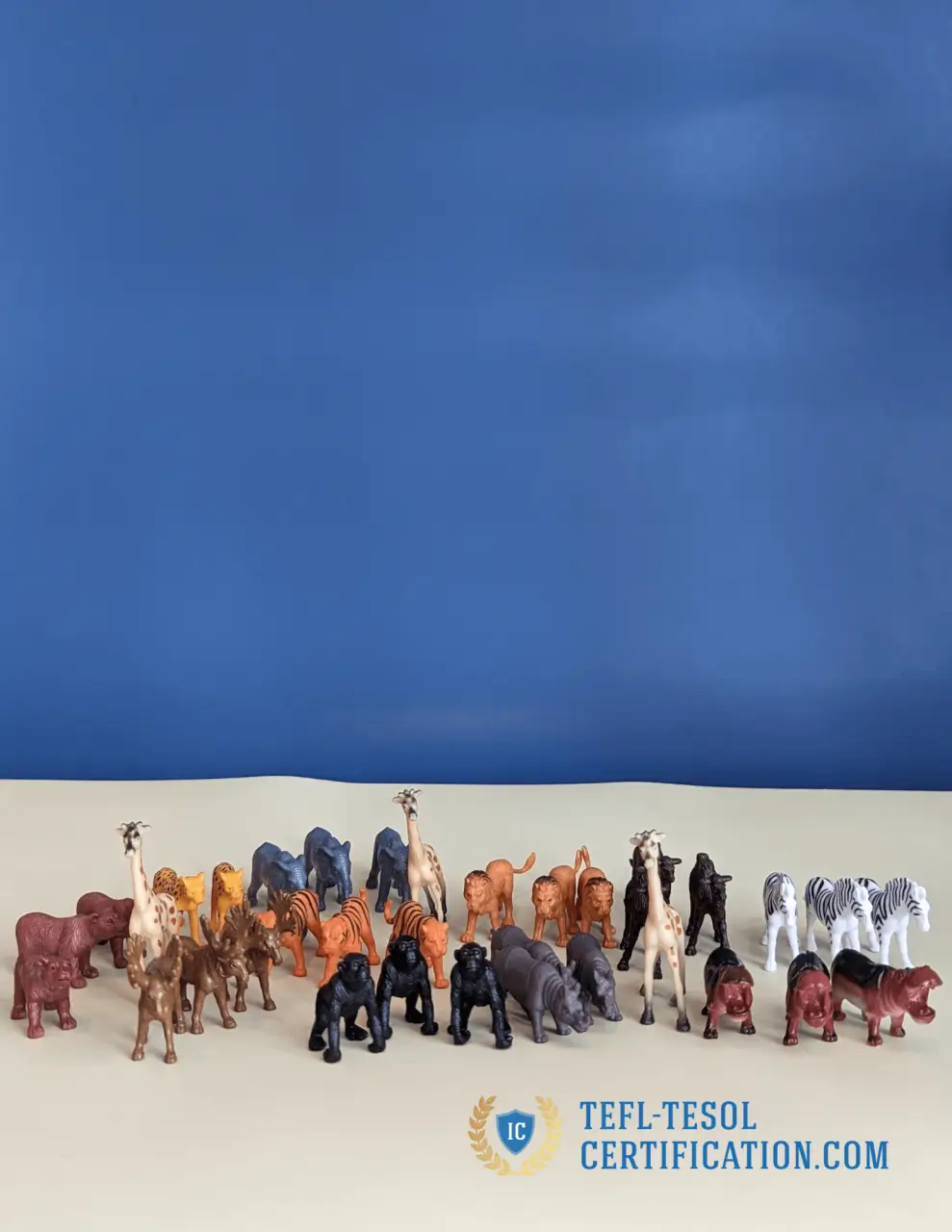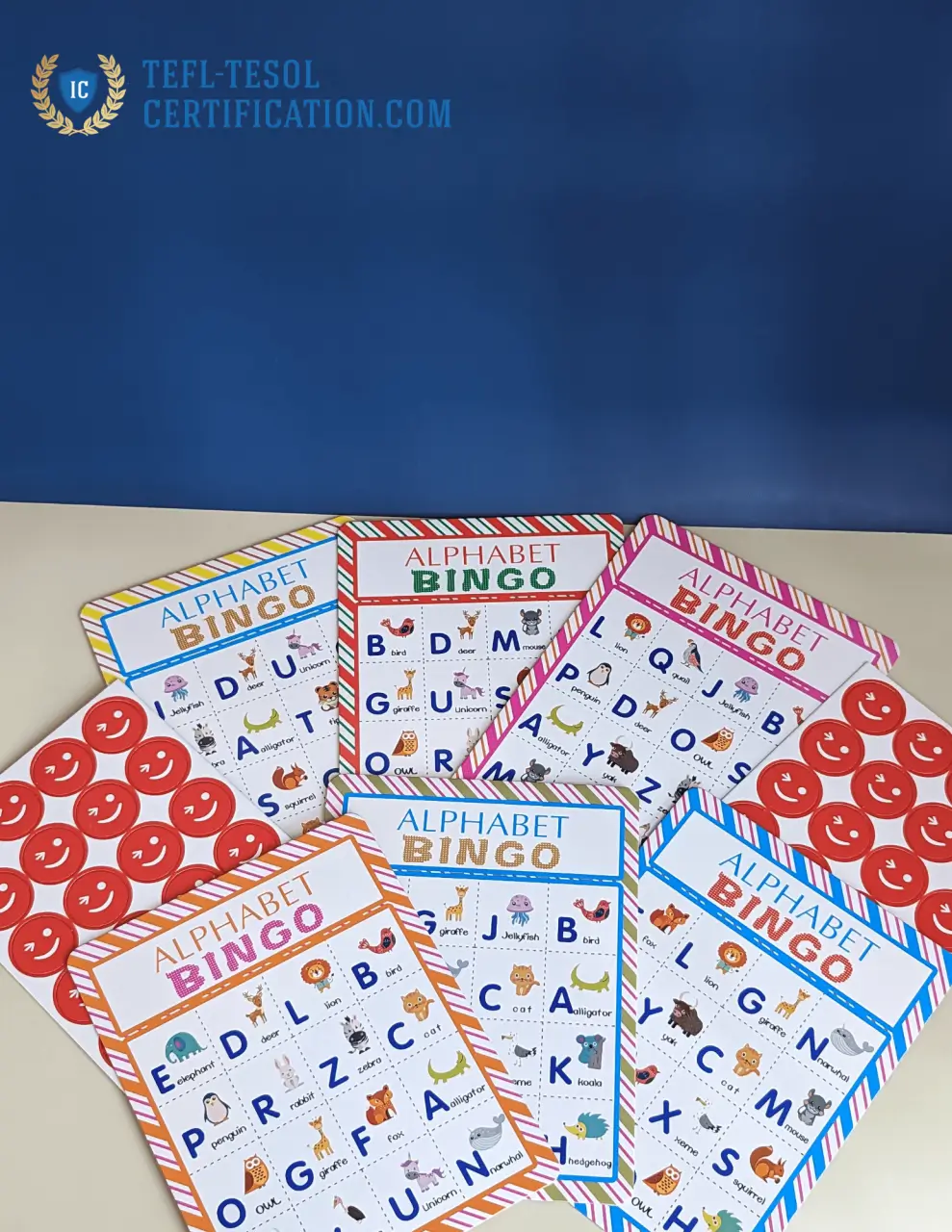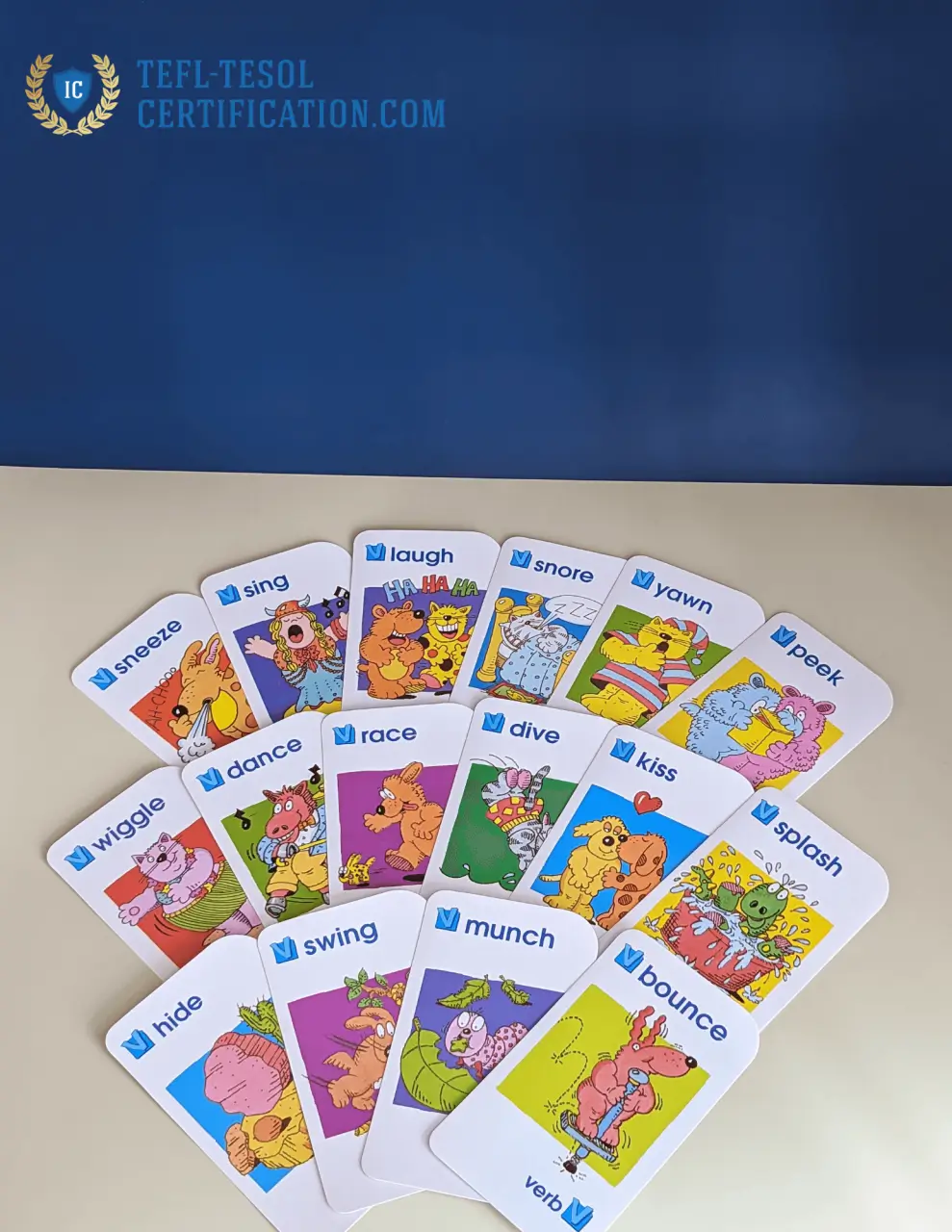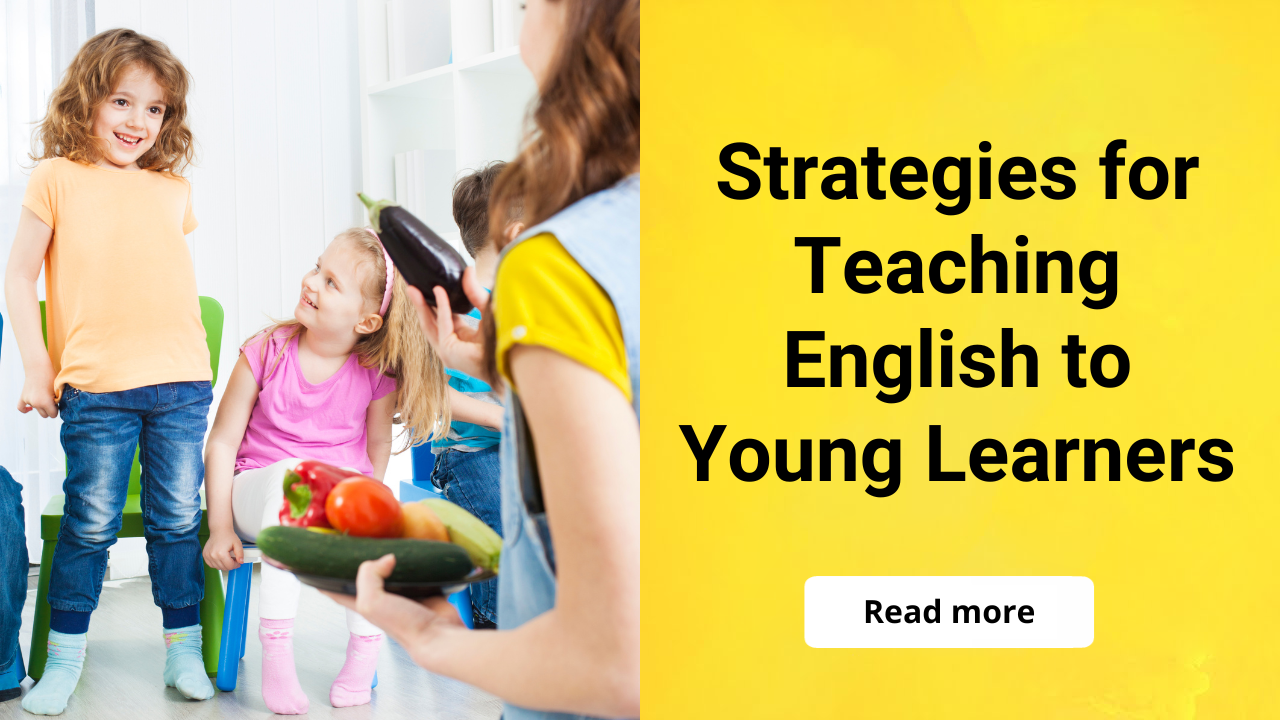And start earning money 💸 by teaching English in your own country, abroad, or online from anywhere on the planet! 🎁 Gifts and bonuses: professional support from your personal coach 🧑🏫 and job placement assistant 💼.
Table of contents
- Why does a child need English?
- Best time for teaching speaking English to young learners
- The importance of creating interest in the English language in children
- Examples of how to apply Playful approach of teaching English to Young Learners
- Teaching English to very young learners: Motivation and comfort
- The sequence of training and perseverance
- Ideas to improve kids language skills
- Teaching young learners English from theory to practice: Let the children live in English
- How to use different methods to improve English language learning?
- Summing up in a conversation about ideas for teaching English to young learners…
This article will go over the basic principles of teaching English to young children, explain the importance of learning English for children and what benefits it can bring. Here you will learn about effective ways to build knowledge based on games and fun activities.
Why does a child need English?
With adults, everything seems to be clear. They need English when traveling to other countries, study and work abroad. For the older generation, lessons can be useful for stimulating the brain and thus prolonging its active functioning.
And why does a small child need a foreign language?
That’s why.
Learning a foreign language from early childhood allows a child to nurture his abilities, develops him comprehensively. Language determines our thinking and influences our cognitive processes. Knowledge of more than one language expands the way we see and interact with the world. One of them will be based on the knowledge of the mother tongue, the others - in foreign languages. Thanks to the comparison of two languages, abstraction from a particular language, the child develops multi-level thinking. Language expands the world. Getting acquainted with a different culture, a child learns to be tolerant. He improves his memory, intelligence, develops observation skills, improves interaction skills with adults and peers.
Lots of advantages!
Best time for teaching speaking English to young learners
The sooner you start introducing your child to the English language, the better. Scientists think so. They say the following:
- During the first 4 years of a person's life, half of the cognitive abilities are laid.
- By the age of 7-8, basic skills are formed.
- Starting from the age of 8-10, any opportunities must be developed through training.
That is, the older a person is, the more time he will need to devote to learning English and put more effort into it. That is why the best option for teaching English to children is to start before the age of 4.
The importance of creating interest in the English language in children
Children speak the languages they hear. Thus, the introduction of English into your child's life will contribute to the fact that he will begin to use it. In the future, when the child grows up, his spoken English will be reproduced on a subconscious level and using correct grammar. However, in order for classes to be really effective and not overload the child, they must follow certain guideline which can be called the voluntary nature of classes.
In no case should a child be forced to learn English. Especially a preschooler. If lessons become a duty, then they can quickly get bored and subsequently it may be difficult for the toddler to learn the language. The main objective of parents and teachers is to arouse interest in the language and a game helps well with this. Through playing, children learn about the world and are easily involved in the process, easily mastering important language skills. An older child can be explained the advantages of language Prociency, but not by future career achievements (although this may also work), but by bonuses that will become available to him now (the ability to understand his favorite songs in English, access to the latest content, entry into international gaming communities or other groups of people of interest).
💡 Unlock the secrets to doubling your teaching income with our exclusive checklist! 🎯 This checklist is designed for English teachers who want to 📈 attract more students and 🔥 keep them engaged for the long term.
Examples of how to apply Playful approach of teaching English to Young Learners
When teaching children, two key components of success are a playful approach and consistency. It is widely known that children learn better through games, and it's important to have age-appropriate games for your students. While 3-year-olds and 8-year-olds may differ, you can still use the same games with adjustments such as higher-level language or increased difficulty.
It's also crucial to repeat the same games with children to help them remember what they've learned. Creating variations of the same game and adding something new each time can keep things fresh, but it's important to still repeat what children have already learned. Each task or game should include familiar elements, words, phrases, or actions as well as some new ones. Avoid making completely similar games or including completely new activities.
To further illustrate this theory, here are some examples.
Learning colors can be more engaging than simply showing color cards and naming the colors. To make it more interesting, give children paints or crayons and ask them to color using specific colors. As they start to comprehend, you can level up by asking them to name the colors they use.
Once they are familiar with colors, introduce new vocabulary related to fruits and vegetables. Instruct children to sort plastic or puffy fruit and vegetable toys or use picture cards or real fruits and vegetables according to their color. Alternatively, give each child an individual task to draw a specific fruit or vegetable using the proper color and use these pictures for sorting games. When children have successfully sorted, ask them to create basic sentences like "An apple is red. A cucumber is green. An eggplant is purple." This way, you can cover two topics - colors and plant food - and maintain consistency by enriching their vocabulary while using what they already know.

To move forward, you can add animals to the lesson. You can use animal toys or ask children to draw animals or create them using dough. Introduce new vocabulary like "Rabbit is white. Rabbit eats carrots." You can also ask children to sort animals into plant-eaters and carnivores. If the word "carnivores" is not age-appropriate for your learners, explain it using simple words and give examples like "Lions eat zebras." You can use examples from "The Lion King" to explain the "circle of life."

Proceed with practicing newly learned vocabulary by using the phrases 'I like' and 'I don't like.'
‘I like rabbits. I don’t like carrots. I like cucumber. I don’t like lions.’
For higher levels you may ask ‘Why?’ and give some options for answers. For instance,
- Teacher: What animals do you like, Peter?
- Peter: I like cats.
- Teacher: Why? Why do you like cats, Peter?
- Peter: I like cats because they are friendly.
- Teacher: What fruit do you like, Alice?
- Alice: I like apples.
- Teacher: Why do you like apples, Alice?
- Alice: I like apples because they are sweet.
Before your students can create sentences explaining why they like or don't like something, they need to have a good understanding of several grammatical concepts. These include:
- forming plural nouns,
- using pronouns correctly (such as he, she, it, they, we, I, and you),
- using the correct form of the verb "to be,"
- using adjectives like "friendly" and "sweet,"
- and understanding how to use subordinating conjunctions like "because."
The statement "I like apples because they are sweet" may seem simple, but it requires a lot of practical learning for children to produce it correctly in terms of meaning, form, and pronunciation. Children do not need to know technical terms like plural form, nouns, pronouns, verbs, adjectives, and conjunctions, which are only in the teacher's head. It is easier for children to learn than you might think if you follow two simple rules: a playful approach and consistency.
While children are drawing or playing with dough, you can ask them about their favorite animals, fruits, and vegetables. Move around the classroom, monitor the process, help individually, and ask questions about their likes and dislikes.
To reinforce the knowledge, you can play a bingo game using cards with fruits, vegetables, and animals, and have each child use their own bingo card. This game also provides practice with "I have" and "I don't have."

The teacher asks the children if they have a horse, and those who have a picture of a horse cover it and say, "I have a horse," while those who don't have the picture say, "I don't have a horse." The same activity is repeated with a picture of a camel. Despite the potential noise level of the activity, the teacher can handle it.
To create bingo cards, the teacher can use the website bingocardcreator.com, which offers various templates or allows for custom designs.
As teachers aim to develop all four English language skills, including reading and writing, they should incorporate a variety of games. One option is a memory game where children match pictures with written words. The teacher can monitor the activity and provide individual assistance or divide the class into teams.
The website interacty.me/products/memory-games can generate memory card games.
To practice writing, you will need to prepare templates and make enough copies so that each learner has their own handout to fill in. Here is an example of what the template may look like:
One day, 1.________________ and 2.________________ went to the supermarket. 1.______________ wanted to buy some 3.________________ and 4.___________________. 2._________________ wanted to buy 5.________________ and 6._______________.
1.________________ wanted 7.______________ 3.______________, but there were only 8.______________ 3._________________. 2._________________ wanted 9._________________ 5._________________, but there were only 10._______________ 5._________________.
The objective for the children is to fill in the missing words in the template. It's important to provide sufficient space for each word since the children's handwriting may be large. To assist the children, pictures of animals, fruits, and vegetables can be displayed on the board with their corresponding spellings underneath. If the children have already completed this task before and are familiar with the words, the spelling can be omitted, and only the pictures can be displayed. The template should include the names of:
- 1 and 2 - animals,
- 3, 4, 5, and 6 - fruits and vegetables,
- and 7, 8, 9, and 10 - colors.
Once the task is completed, ask the children to read their story aloud, as it is sure to be amusing. Prior to the activity, it's essential to explain any unfamiliar words in the context of the text, such as "went," "supermarket," "wanted," "buy," "but," "there were," and "only." For example, the teacher can display pictures of a supermarket and a grocery list during the explanation.
To combine the topics of numbers and plural noun formation, the teacher can use playdough to instruct the children to create various fruits and vegetables, such as 8 red apples, 4 yellow pears, and 5 green cucumbers. Alternatively, the class could make a fruit and vegetable salad following a recipe, with each child's parents bringing in one of the necessary ingredients. Engaging in hands-on activities such as these allows the children's brains to be highly active, enabling them to absorb and process more information. While making the salad, the teacher can ask questions such as, "Do you like this fruit/vegetable?" "How many of this fruit/vegetable do we have?" "What is the color of this fruit/vegetable?" and "Is it yummy?" The class can count all the blueberries, tangerines, raspberries, and other ingredients together as they make the salad.
It is important to highlight the distinction between singular and plural forms of nouns. For instance, we say:
"one carrot" but "two carrots" or "ten carrots."
Similarly, we say:
"one blueberry" but "fifteen blueberries."
If your students are under the age of four, focus on teaching them numbers zero to ten. For students aged four to six, expand their knowledge to numbers zero to twenty. For those over six, they can learn numbers up to one hundred. While monitoring the activity, ask students individually to help them practice using nouns' singular and plural forms.
- Teacher: How many apples do you have for the salad, Kim?
- Kim: I have two apples.
Help, if the answer was ‘I have two apple’ - Teacher: How many pears do you have for the salad, Kim?
- Kim: I have one pear.
I have covered the basic topics of colours, eatable plants and animals. New vocabulary of nouns is implemented perfectly when children operate with the basic verbs, so they can build full statements.
You should make different activities to practice these verbs.
These verbs are: like, have, see, spy, to be, can, want.
There were examples of drilling like and have, let’s have a look at activities for see and spy.
An effective activity is the classic game "I spy... something yellow." When a child says, "I spy... something yellow," classmates should try to guess what object in the classroom is yellow. It is alright if children cannot name the subject. They can stand up, move to the object, and point to it, and the teacher can name it. During the same activity, kids can use the verb "see," for example, "I see something blue."
The verb "to be" and its forms are crucial for all learners of English at all levels. It is recommended to incorporate practice of this verb into every activity.
Here's a fun activity to spark your learners' imagination. The goal is to act out an animal and have others guess which animal it is.
To start, one learner stands at the front of the class and silently acts like an animal. The other learners then try to guess which animal it is by asking questions or making statements like "Are you a crocodile?" or "You're a monkey!"
If no one guesses the animal correctly within 30 seconds, the performer reveals the animal by saying something like "No, I'm not a cat, I'm a tiger."
Before starting the activity, make sure to teach the correct sentence structures. If someone makes a mistake like saying "He are snake," kindly correct them by saying "He is a snake" and asking them to repeat the correct sentence.
It is up to you whether your learners shout out suggestions altogether or one by one, depending on their Prociency. If it's their first time practicing the verb "to be," it's better to use the one-by-one system of responses. If they're familiar with it and make few mistakes, then they may shout out their answers.
When teaching new verbs like "can," it's best to do so when the lesson's aim is to learn new verbs. For instance,
"Kangaroos can jump. He can swim. I can sing. Zebras can run."
To help children memorize these new verbs, incorporate movement into the lesson. All the verbs, such as jump, crawl, sing, dance, eat, swim, walk, and run, are better memorized when children do the action. The same bunch of new verbs can also be practiced with the verb "want," emphasizing the difference between using "to" with "want" but not with "can." Ask questions and elicit answers, such as "I want to dance. I want to smile. I want to say."
Once your students feel confident with the new nouns and verbs, like:
"like," "have," "see," "spy," "to be," "can," and "want,"
they're ready to add adjectives to their fluency speech. It's best to introduce adjectives using their opposites, such as:
- hot - cold,
- big - small,
- good -bad,
- hard - soft,
- dry - wet,
- happy - sad,
- kind - angry,
- beautiful - ugly.
You'll need to create plenty of activities for all the adjectives, giving different contexts.
For example, a bunch of adjectives that kids may learn during the topic of emotions. It's essential to teach children to talk about their emotions and mood and to add a question "why" to expect an explanation when they're ready for challenges.
"I am angry because I am hungry. I am sad because I am sleepy."
To make this activity more engaging, prepare different face expressions by cutting out cardboard faces and drawing recognizable emotions. You may ask each child about their mood, giving them a choice of the masks you have created and expecting them to name the emotion. This activity never gets old, and you may add new vocabulary even when you have experienced learners.
"I am excited. I am thrilled. I am confused. I am worried."


One good way to present adjectives and ensure that children understand them is to match the adjective with a well-known cartoon or movie character. For example:
- An evil witch.
- A beautiful princess
- Cinderella is kind.
- A brave knight.
Ask your learners to name all the dwarfs from the Snow-white tale since their names are adjectives. Teach children to share their opinions, so their answers to your questions will be like: I think Winnie-the-Pooh is very brave.
- In my opinion, the Beast is kind.
- I agree that Shrek is funny.
Colors are also adjectives, so now your little students may describe the wolf not only using his color but also using more descriptive words.
- The big bad wolf is angry.
- Three pigs are scared.
The best time to read books, learn new songs, and nursery rhymes is when you're teaching adjectives.
I do not mean, that you shouldn’t do it before or during other classes. Songs and rhymes are children’s favourites. Always include some fun, active, musical elements to your lessons. However, when you learn adjectives, reading books and learning by heart songs and rhymes have a double purpose.
I would like to step out of the hidden syllabus for young learners I have described above, and discuss the various types of learners.
Students may be visual or auditory learners, they may have analytical mind and comprehend information through rules and formulas, or they can gain new information directly through examples.
If we speak about learning languages, there are learners for whom Communicative method is the best. No rules, no formulas, just a communicator as a mentor, and these learners catch the language. That would be great if it worked for everyone.
However, we are all different personalities. Learners with an analytical type of thinking require explanations, rules and formulas.
My recommendation is to find out what type of learner each of your student. Only when you know, you can help a student to achieve the most.
Many educators argue, giving an example, that children speak their native language without rules, just because they use this language as a communicative tool. And mostly, they are right. However, there are children, who use even their native language with mistakes, and only when a rule is presented, they correct themselves. The same thing happen to them, when they got the formula to build correct sentences in English. These analytical learners often excel in math and frequently ask "why." Be sure, these learners require logical answers.
Returning to the topic of songs and rhymes, it can be an excellent way for students to learn new vocabulary and understand how to use it in context. However, for students with an analytical mindset, it may be necessary to provide additional explanations to fully understand the content of these materials. It's crucial that the songs and rhymes align with the lesson objective and should not introduce more than 20% of new vocabulary, or it may become overwhelming for the students.
Additionally, don't forget to include books and songs in your lessons. Creating a book corner in the classroom can be a great way to encourage students to read. If you use YouTube as a source of songs, consider upgrading your account to avoid unnecessary ads during the lesson.
When covering topics such as animals, prepare activities, relevant books, nursery rhymes, and songs. As your students' English comprehension grows, it will become easier to find appropriate and engaging materials for them.
🚀 More students, 💰 higher income, 🌍 complete freedom! ✅ 112 verified platforms with top rates ⏳ Flexible schedule – work whenever and as much as you want 🎯 Simple requirements – start earning right away 💎 Boost your career and income by teaching students worldwide!
Teaching English to very young learners: Motivation and comfort
A child does not have the same motivation to learn English that adults have. Up to a certain age, a child does not think about the need to build a career or use a foreign language for work. Therefore, it is important to interest the child in the process itself. If he is interested in the lessons, if they are fun and not tedious, the child himself will actively participate in the lessons.
That’s why there should be a blanquet of comfort for the child during training. Some children easily stay in a group with other children and a teacher, others need one of the parents to be nearby. It depends on the age of the child and his character. If the classes are held naturally for the child, then he will easily begin to master the material. If you see that the child resists learning, you should not ignore it. Perhaps the methodology does not suit him, the teacher does not like him, or it's just hard for him. It is worth changing the approach to regain interest.
The sequence of training and perseverance
Until the age of six, it makes no sense to load children with rules, spelling and grammar, but it's good to learn new words together through songs, dances, games. The primary concern is that the presentation of the material is consistent and new knowledge is smoothly added to what the child is already familiar with. Teens can already learn the structure of the language. They will benefit from diagrams, illustrative examples of the use of a well-established phrase.
Learning a new skill also involves work. There will be times when it may seem to you that students are not showing any visible results. In these moments, you must support them and overcome the difficulties that have arisen together with them without losing pace. Perhaps you need to experiment with techniques. It is important to remember that a reward or incentive at the end of this path is a great motivator.
Ideas to improve kids language skills
Choosing the optimal form of training that will work anytime and anywhere is an impracticable approach. In the classroom and in individual classes, the learning process will depend on the age of the children, their individual characteristics. In addition, periodic change of the form of training will be a good approach. This will make the lessons more interesting for young students.
Let's look at several methods of learning English that can be used during lessons and alternate them in the process:
- The method of associations. The essence of this method is to establish chain links between the English word meaning in the child's language. The connection can be words, imaginary images, emotions. It is appropriate to use flash cards, bright illustrations, sound effects, jokes, rhymes, schemes. It is necessary to give children not just a word to remember (the word pear for example), but also let them imagine the bulb-shaped shape of this fruit, imagine how it lies in the palm of their hand, how hard or soft it is, what color and taste it has. Subsequently, a vivid image makes it easy to find the right word in memory.
- The audiovisual method. Children read and memorize dialogues that they can use in everyday life. With the help of them, oral speech is well practiced. Dialogues can be made even more interesting by adapting them to each student, helping them to have a dialogue with another student or with a teacher on a relevant topic.
Teaching young learners English from theory to practice: Let the children live in English
Talking is the key to everything. Speak to your students in English and encourage them to communicate with each other. Discuss the weather, favorite books or movies, and share stories about pets. Anything that is interesting to children can become a topic of conversation. This method contributes to the fact that children gradually learn to think in English. Write down frequently used phrases, it will be useful to memorize them.
Another good way to immerse kids into a language is by watching videos, cartoons or movies, listening to songs, audiobooks, and performances is suitable. Speak as a native speaker and communicate with students exclusively in English, even if you know their native language. This will spur them not to give up if they don't know a word, but to try to remember synonyms or describe what they want to say in other words. In addition, this method teaches you to think in English. Very useful!
How to use different methods to improve English language learning?
The lesson can be diversified by adding the following elements to it (something is suitable for classroom classes, something during teaching English online):
- outdoor games in a foreign language,
- modeling, drawing, making crafts on the topic of the lesson;
- vocabulary expansion game using flashcards;
- watching videos or listening to audio on the topic of the lesson.
In addition, you can invite students to choose poems for memorization and hold a performance competition or play a mini-performance in English. For an online lesson, a play for one or two actors is suitable, then the teacher themself will become one of the speakers. In good weather, classes can be held outdoors, and an online lesson while walking with a phone.
All these methods are designed to peak the child's interest in learning the language, deepen his knowledge, improve communication skills, and help express themself using English. Mixing these styles is a great idea. With this approach, children will not have a chance to get bored. They will be able to switch from one kind of activity to another, which will have a beneficial effect on the results. So gradually going from simple to more complex, through a game and exciting tasks, English will become a part of the child's life.
Summing up in a conversation about ideas for teaching English to young learners…
As you can see, it is difficult to overestimate the importance of learning a foreign language from early childhood. It is even more difficult to downplay the role of the teacher in this process. It will depend on you not only how much fun the child has during training, but also potential future opportunities, made possible thanks to their mastery of an additional language.
We offer TEFL/TESOL courses that will help you become a qualified English teacher for children of any age. Our courses include teaching the basics of teaching methods, curriculum development and much more. Join us today and start your career as an English teacher! In our blog, you can learn more about TEFL / TESOL courses and choose a suitable course of study for you.
Terms used:
TEFL, TESOL

York Fern
An English instructor with 12+ years of experience. I work for an online school and travel the world, teaching students from various countries, leveraging my TEFL/TESOL certification. Seeing the world's oceans, mountains, and cities with my own eyes has given me a profound appreciation for the importance of quality education and international communication.
and start earning by teaching English in your country, abroad, or online from anywhere in the world! Order the course with a 50% discount 💸 and receive as a gift the support of a personal coach 👨🏫 and job placement assistant! 🎁🚀 Hurry, limited spots available! 🏃♂️💨
💡 Unlock the secrets to doubling your teaching income with our exclusive checklist! 🎯 This checklist is designed for English teachers who want to 📈 attract more students and 🔥 keep them engaged for the long term.
🚀 More students, 💰 higher income, 🌍 complete freedom! ✅ 112 verified platforms with top rates ⏳ Flexible schedule – work whenever and as much as you want 🎯 Simple requirements – start earning right away 💎 Boost your career and income by teaching students worldwide!
choose us?




